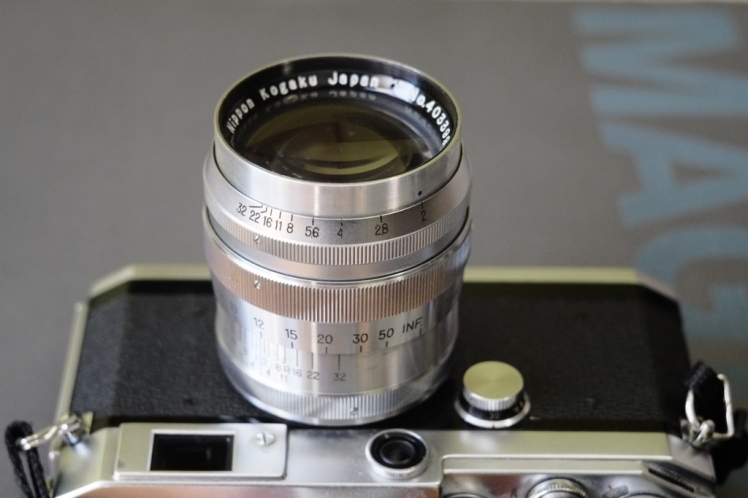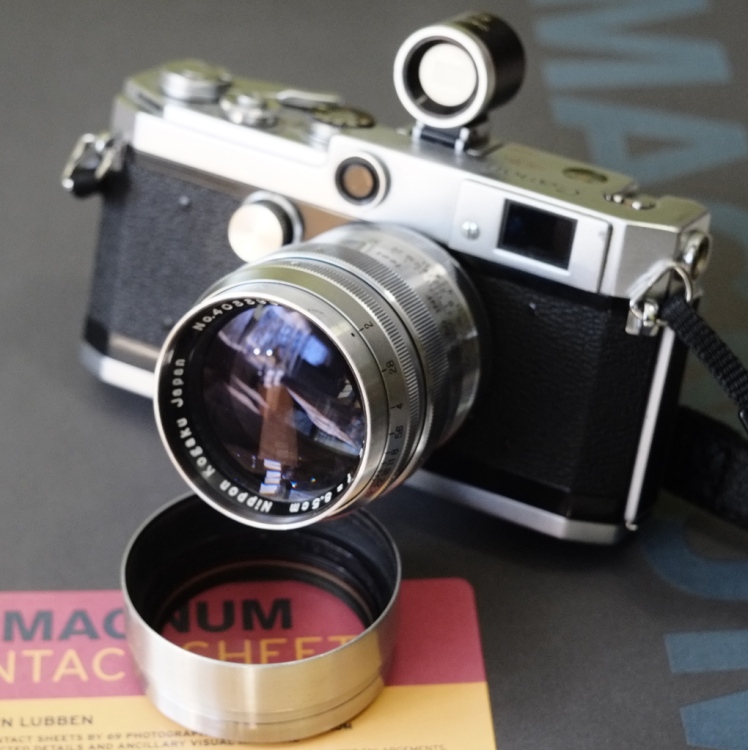Meet the Lens: Nikkor P.C. 85mm f/2
(I started putting this together right around the time things started falling apart, so after much delay and reediting and faffing about, it might seems slightly disjointed in places. Deal with it.)
As part of the cleaning and reorganizing of the site last year, I went through the gear listings to update status, add links, and just make everything generally more usable. In the process I noticed that there were some bits and pieces that had not been properly introduced, and thus had no posts to link to. This really bothers my OCD, so in the interest of calming the nagging voices in my head – well, one of them at least – I will be attempting to correct these oversights.
First up is the Nikkor 85mm f/2 in Leica Thread Mount. It’s a big beast of a lens, all solid brass and huge lumps of coated glass, with a nice two-piece hood that also holds a Series VII filter. The focusing throw is as long as it can be, allowing for precise, if not fast, focusing. Mine is a later version, so the aperture closes down all the way to f/32; earlier versions only stopped down to f/16. My example is, aside from a few meaningless cosmetic rubs on the finish here and there, almost pristine.
The sheer size and mass of the thing makes it a bit unwieldy on smaller Leica bodies, but it works well on the larger Canons. An added bonus of the latter is that there’s one of Canon’s trick automatic parallax-correcting brightline finders available in 85mm, making the L/V/VI-series bodies – all of which have the pin necessary for it to function – great option. I normally mount it on my Canon L1. Without a good finder, the lens would be largely relegated to static subjects; with it, it becomes useful for a wide range of tasks.
Obviously, this is all secondary to the sort of photos the lens produces. On this front, I cannot say enough good things about it. It’s sharp without being hard, creamy and smooth as it goes out of focus. Rendering is typical of Sonnar-formula lenses, but even by that high standard it’s excellent. From the first photos I took with it I knew it was going to be one of my favorites. I’ve only shot black and white with it thus far, but I’ll get some color behind it soon.
More than once I’ve heard or read of people advocating the 85mm focal length as the long half of a 35/85 two-lens kit. Given my increasing comfort with the 35mm focal length, I may give this a shot as a travel setup at some point, though I’m still instinctively inclined toward 28/50/100, but managing two lenses rather than three would be nice. The only real downside is the weight of the big Nikkor, but I’ve carried more and heavier gear before.
Regardless, it’s just a wonderful lens, one of the best I’ve ever shot with (by the purely subjective standards I apply to these things). While in a similar range to my Canon 100/3.5 and Elmar 90/4, it’s a very different animal, and it’s not just the extra speed. While both of the other lenses are quite good, the Canon especially, with pleasant rendering and good sharpness, they don’t have the smoothness, the elegance, the personality of the Nikkor. If you are looking for something in a portrait-length lens for LTM, I urge you to seek out one of these lenses – I cannot imagine you’ll be disappointed.
If you’d like more history and technical information, Nikon has thoughtfully provided an in-depth discussion here.














You must be logged in to post a comment.